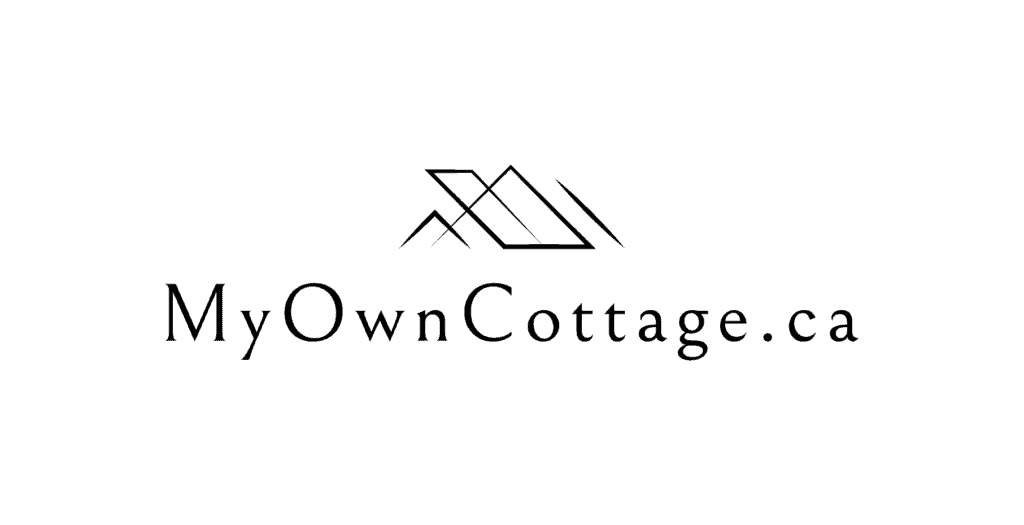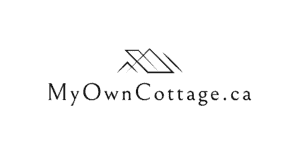Do Modern Prefab Cottages in Ontario Meet Local Zoning and Permit Requirements?
Do modern prefab cottages in Ontario meet local zoning and permit requirements?
Learn about zoning rules, permit hurdles, and how to avoid common compliance issues.
Do Modern Prefab Cottages in Ontario Meet Local Zoning and Permit Requirements?
Yes, modern prefab cottages in Ontario must meet all local zoning bylaws and require building permits under the Ontario Building Code, including compliance with CSA A277 standards for factory-built homes.
Municipal approval is mandatory for foundation type, setbacks, septic systems, and land use zoning before construction begins.
If you’re dreaming of owning a modern prefab cottage in Ontario, don’t let red tape become a roadblock.
Before falling in love with floor plans, lakeside views, or the idea of a high-quality modular platform, it’s crucial to understand the legal landscape.
Zoning restrictions, permit requirements, and building code compliance vary across Ontario and can affect where and what you’re allowed to build.
Is it Easy to Get a Permit for a Prefab Cottage in Ontario?
At My Own Cottage, we’ve walked hundreds of buyers through this process with our modern prefab cottages for sale in Ontario.
Our projects range from seasonal guest houses and tiny homes to fully customized, year-round residences featuring Muskoka Rooms, cathedral ceilings, and energy-efficient building techniques.
In this expert-backed guide, our in-house permit consultants and design team walk you through every critical step — so you can confidently move forward with your dreamy prefab cottage in Ontario.
Do Prefab Cottages in Ontario Require a Building Permit?
Yes — all prefab cottages in Ontario require a building permit and must fully comply with the Ontario Building Code (OBC), just like traditional site-built homes.
This applies whether the structure is a factory-built modular home, panelized system, or hybrid prefab.
To be approved for construction, prefab cottages must meet strict OBC standards, which include:
Minimum Square Footage: Often 400–700 sq ft depending on zoning and use (seasonal vs. permanent).
Structural Load Calculations: Must account for Ontario’s snow load, wind resistance, and seismic zones.
Fire Egress and Exits: Including window and door sizes, locations, and safe exit distances for each bedroom.
HVAC Systems and Insulation: Energy-efficient systems required under SB-12 (Energy Efficiency) of the OBC.
Foundation and Frost Protection: Pier, slab, or crawlspace foundations must meet depth and insulation specs to prevent frost heave.
🔍 Key Tip: Building permit applications for prefab homes must include stamped architectural drawings, applicable compliance documents, and a lot-specific site plan. Some municipalities also require a separate septic design or grading plan.
🛠️ Expert Insight:
“Many people assume prefab equals ‘plug and play.’ That’s not the case,” explains Michael Tran, a building permit consultant in Simcoe County. “Whether it’s a 900 sq ft open-concept getaway or a tiny home with a small footprint, you still need municipal approvals.”
The type of prefab construction — modular, panelized, or hybrid — doesn’t exempt you from permits.
Even homes built in a controlled environment must undergo local inspections.
📘 Get the complete guide at Modern Prefab Cottages Ontario.
How Zoning Affects Your Ability to Build or Buy
Zoning bylaws are one of the most critical — and often overlooked — factors in determining whether you can build a prefab cottage on a given lot in Ontario.
Each municipality sets its own zoning rules, which regulate land use, dwelling types, density, and environmental impact.
These regulations vary widely between regions such as Lake Muskoka, Haliburton Highlands, and rural areas in Northern Ontario.
Key Steps Before Purchasing Land or Fully Committing
Before purchasing land or committing to a build, ask:
Is the lot zoned for residential, recreational, or seasonal use? Some zones prohibit year-round occupancy or limit the structure to an “accessory” use.
Can you build a secondary dwelling or guest house? Not all zones permit multiple units or garden suites — critical for income properties or multigenerational living.
Are prefabricated or modular homes allowed by right? Some municipalities still restrict factory-built housing due to outdated zoning codes or aesthetic requirements.
Does the lot permit permanent foundations (slab, crawlspace, or basement)? In certain zones, only pier foundations or floating slabs are allowed — especially in flood-prone or conservation areas.
Are there minimum or maximum square footage rules? Some lots may prohibit tiny homes under 400 sq ft or cap the dwelling size to protect natural viewsheds.
💡 Pro Tip: If the property is near a lakefront, wetland, or conservation authority boundary, you may face additional setbacks (e.g., 30m from shoreline), stricter height limits, and architectural control guidelines to preserve the natural landscape and water access.
Common Zoning and Site Planning Issues
Even with a flawless floor plan and modern design concept, many prefab cottage projects in Ontario are delayed or denied due to site-specific zoning and infrastructure challenges.
The three most common barriers are:
1. Septic Limitations
If the property is not connected to municipal sewer services, you’ll need to install a private septic system — and approval depends on soil type, proximity to water, and lot size.
For rocky terrain, wetlands, or lots with poor percolation, the municipality may require:
Soil testing (percolation or “perc” tests) to determine suitability
Minimum setbacks from wells, lakes, and property lines under Ontario Building Code Part 8
🛠️ Expert Note: In cottage regions like Muskoka or Kawartha Lakes, engineered septic solutions can add $15,000–$40,000 to project costs and may require Ministry of Environment sign-off.
2. Setback Violations
Setbacks define how close you can build to property boundaries, roads, or natural features.
Violating these limits can trigger costly redesigns or permit denials. Common restrictions include:
30m waterbody setback for shoreline lots (regulated by Conservation Authorities)
Front, side, and rear yard setbacks specified by zoning (often 3–10m)
Additional buffer zones for environmentally sensitive areas
✅ Always review the zoning map and consult the local Planning or Building Department to avoid unexpected compliance issues.
3. Foundation Restrictions & Approvals
Ontario’s climate and soil conditions influence what types of prefab foundations are permitted.
While slab-on-grade, pier, or crawlspace systems are common for modular homes, local inspectors may require:
Frost-protected footings below the frost line (typically 4′ in Northern Ontario)
Engineered drawings for post-and-pad or floating pier systems
Full geotechnical reports if building near unstable slopes or rock
🔍 Certain conservation or waterfront zones may prohibit basements or require non-invasive foundations to preserve drainage patterns and natural vegetation.
🏡 Real Buyer Story:
“We found the perfect modern design near Parry Sound but had to pivot our floor plan due to a required 30m water setback,” said Janice W., a recent cottage buyer. “Thankfully, our builder adjusted quickly and still gave us amazing natural light and a spacious living room.”
What Ontario Building Inspectors Recommend
Inspectors consistently recommend:
Get zoning confirmation in writing before purchase.
Submit building plans for pre-approval if possible.
Use builders familiar with modular platform regulations and local inspection standards.
Document everything — from design ideas to septic studies.
Partnering with experienced prefab providers — like those using quality control-certified modular construction techniques — offers peace of mind.
Look for firms endorsed by My Own Cottage, registered with Tarion, or known for superior customer service in the real estate and green building community.
🔗 View modern prefab cottages for sale in Ontario — all builds meet or exceed local codes and energy efficiency standards.
Next Step: Book a Property Review
Before you place a deposit or sign with a builder, get proactive.
Book a free zoning and permit consultation or call us directly today.
Our resources are crafted by experienced planners and permit consultants specializing in prefab and modular builds across Ontario.
🧑💼 Request a Free Consultation
📲 Call Us Directly: (705) 345-9337
✅ Ontario-Built | ⚡ Energy-Efficient | 🏡 Fully Customizable | 🚚 Fast Delivery
Alternatively, for your convenience, you can also simply fill out the contact form below and we’ll get back to you soon! 👇
❓ FAQ: Modern Prefab Local Zoning and Permit Requirements
Are prefab homes legal in Ontario?
Yes, prefab homes are legal in Ontario as long as they comply with local zoning bylaws and meet Ontario Building Code requirements, including CSA A277 certification for factory-built homes.
Do you need a building permit for a prefab cottage in Ontario?
Yes, a building permit is mandatory for any prefab or modular cottage in Ontario. It ensures compliance with local zoning, structural safety, energy efficiency, and site-specific requirements.
How much does it cost to build a prefab cottage in Ontario?
As of 2024, building a prefab cottage in Ontario typically costs between $250 and $400 per square foot, depending on design complexity, interior finish, and site preparation.
What is a modular home in Ontario?
A modular home in Ontario is a CSA A277-certified dwelling constructed in sections at a factory, then transported and assembled on-site to meet Ontario Building Code standards.
Are prefab homes allowed in all municipalities in Ontario?
Prefab homes are allowed in most Ontario municipalities, but exact permissions depend on local zoning bylaws, which govern use type, building footprint, and foundation requirements.
What permits are required for a modular home in Ontario?
You need a local building permit, stamped architectural drawings, CSA A277 compliance documents, foundation details, septic/sewer plans, and zoning confirmation for a modular home in Ontario.
How much do prefab homes cost in Ontario?
Prefab home prices in Ontario range from $180,000 for compact models to over $500,000 for custom builds with premium features like cathedral ceilings and Muskoka Rooms.
What are the best affordable prefab homes in Ontario?
The best affordable prefab homes in Ontario include high-efficiency models from My Own Cottage, Quality Homes, and Legendary Group, with prices starting under $250,000 for modern, energy-smart designs.
What makes modern prefab homes in Ontario different?
Modern prefab homes in Ontario offer open-concept layouts, natural light, energy-efficient HVAC systems, and contemporary design — all built faster and with greater quality control than traditional homes.
What are prefab home prices in Ontario in 2024?
In 2024, prefab home prices in Ontario average $250–$350 per square foot, reflecting rising material costs and demand for energy-efficient, code-compliant modular construction.
Do Modern Prefab Cottages in Ontario Meet Local Zoning and Permit Requirements?
Yes, modern prefab cottages in Ontario must meet all local zoning bylaws and Ontario Building Code requirements, including CSA A277 certification, to ensure they are legally buildable, safe, and structurally sound.

